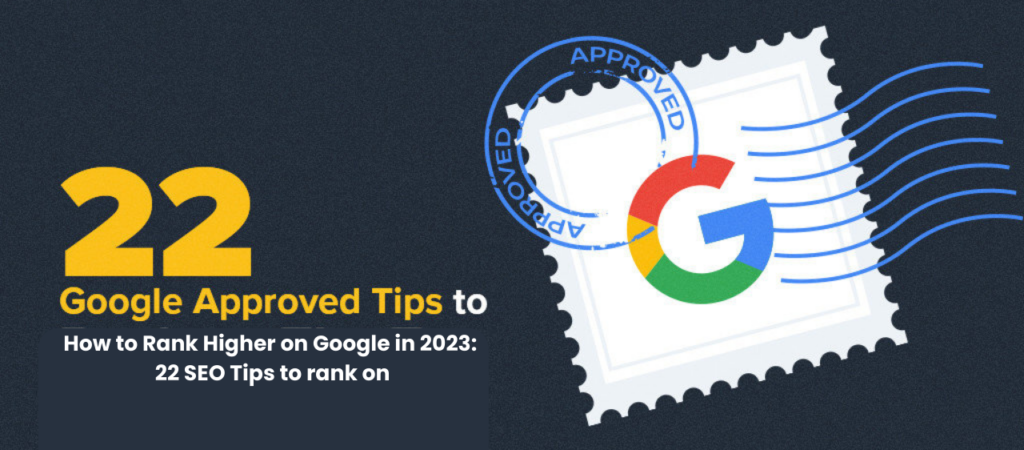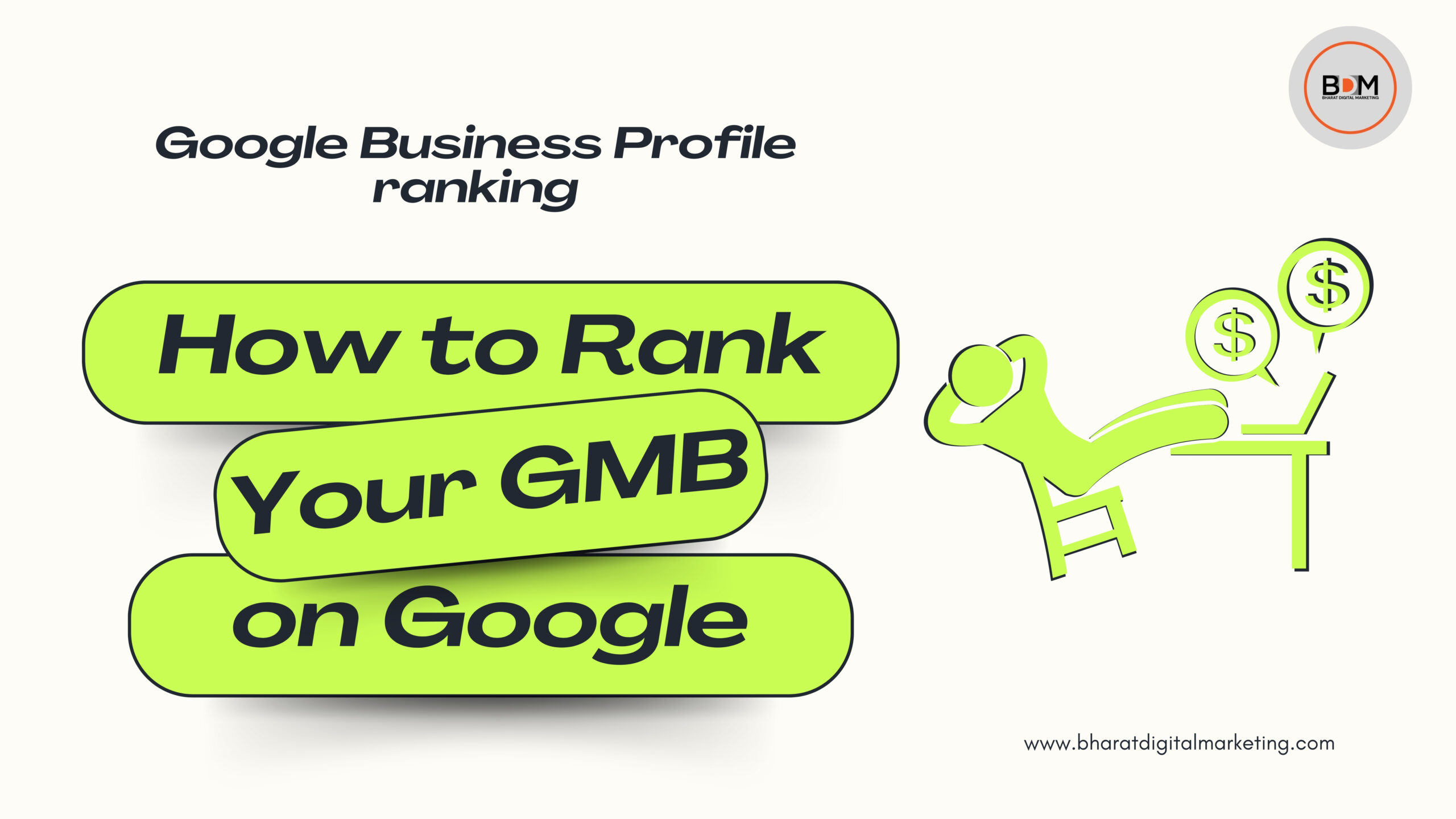In today’s digital age, ranking higher on Google has become essential for any business or website that wants to succeed online. With the constant evolution of Google’s algorithm, it can be challenging to keep up with the latest ranking factors and SEO strategies. In this blog, we’ll be sharing 15 tips to help you rank higher on Google in 2023.
- Create High-Quality Content
Creating high-quality content that is useful, informative, and engaging is one of the most important things you can do to rank higher on Google. Make sure your content is well-researched, well-written, and provides value to your audience.
- Optimize for User Intent
Google’s algorithm has become increasingly sophisticated, and it now prioritizes websites that are optimized for user intent. Make sure your content matches the intent of the user’s search query and provides a satisfying experience for the user.
- Focus on Mobile-First Optimization
With more than half of all searches now being performed on mobile devices, it’s crucial to focus on mobile-first optimization. Make sure your website is mobile-friendly, loads quickly, and provides an excellent user experience on mobile devices.
- Prioritize Page Speed
Google has indicated that page speed is a critical ranking factor, so it’s important to prioritize this aspect of your website. Optimize your images, use a content delivery network (CDN), and reduce the number of HTTP requests to speed up your site.
- Use Structured Data
Structured data, also known as schema markup, can help Google understand the content on your website better. Use structured data to provide additional context and information to Google, which can help your website rank higher.
- Optimize Your Title Tags and Meta Descriptions
Your title tags and meta descriptions are what users see in the search results, so they need to be optimized for both users and search engines. Use relevant keywords and make sure your titles and descriptions accurately reflect the content on your website.
- Build High-Quality Backlinks
Backlinks are an essential ranking factor, but not all backlinks are created equal. Focus on building high-quality backlinks from authoritative websites that are relevant to your niche.
- Use Social Media to Promote Your Content
Social media can help you reach a broader audience and drive traffic to your website. Share your content on social media platforms and engage with your followers to increase visibility and engagement.
- Optimize Your Images
Optimizing your images can help improve your website’s page speed and user experience. Compress your images, use descriptive filenames, and include alt text to make your images more accessible and SEO-friendly.
- Focus on Local SEO
If you have a local business, it’s essential to focus on local SEO to appear in Google’s local search results. Optimize your Google My Business listing, use local keywords, and focus on building local backlinks.
- Monitor Your Website’s Analytics
Monitoring your website’s analytics can help you identify areas for improvement and track the success of your SEO efforts. Use tools like Google Analytics to track traffic, user behavior, and other important metrics.
- Use Long-Tail Keywords
Long-tail keywords are more specific and targeted than broader keywords, making them easier to rank for. Focus on using long-tail keywords in your content and targeting niche topics to drive more organic traffic to your website.
- Improve Your Website’s User Experience
A positive user experience can help improve your website’s ranking on Google. Focus on creating a website that is easy to navigate, visually appealing, and provides a seamless user experience.
- Publish Fresh Content Regularly
Publishing fresh, relevant, and high-quality content regularly can help improve your website’s ranking on Google. Make sure you’re publishing content that is useful and informative to your audience
15. Focus on on-page SEO
On-page optimization will continue to be one of the easiest ways to improve your Google rankings in 2023.
Here are some best practices to help you with on-site SEO:
Use your keywords at the beginning of your title tags
Focus on creating long-form content (aim for at least 1,800 words)
Insert your keyword two to three times per page (keyword stuffing will get you the opposite result)
16. Don’t neglect Technical SEO
Technical SEO means making sure your website is designed in a way that makes it easy for search engines to crawl and index it.
you’ll need to make sure that:
-All your pages are secure
-Your site is optimized for mobile
-You don’t have any plagiarized content or similar content on different pages of your own site
-Pages load quickly
-All the links work
17.Don’t settle for low-quality content (ever)
Google’s algorithm is heavily influenced by backlinks, which are links to your website from other websites. Therefore, one of your primary objectives ought to be to encourage visitors to share your social media posts. And visitors will only do that if you consistently publish high-quality content.
18. Create internal links
While we’ve written a lot about the importance of backlinks, you should also focus on creating internal links. you should place the internal links toward the beginning of the web page. This can also help to improve your bounce rate (and by improve we mean lower, but more about this later).
19. Include LSI keywords
A search engine like Google can use related phrases known as LSI keywords (Latent Semantic Indexing) to gain a deeper comprehension of a page’s content.
20. Match search intent
Do you know what your target audience actually wants to know about the topics that you plan to write about? Basically, Google rewards the websites that share content that people are searching for most often. What does your target audience typically enter into Google’s search bar?
21. Improve your bounce rate
If visitors land on your site, look at one of your pages and return back to the search page in a matter of seconds, it will hurt your search rankings.
To improve your bounce rate, make sure that all the most important info appears above the fold (in other words, visitors shouldn’t have to scroll down to find the information that they need).
22 . Create a Google My Business Profile
Businesses can also get a better Google ranking for local searches by creating a Google My Business profile. If your Google My Business profile closely links to what your target audience typically searches for, Google will find it easier to match your profile to the right searches. Also, if your business has more Google reviews, it can help to boost your local ranking on Google.
So stay tuned for more updates!





